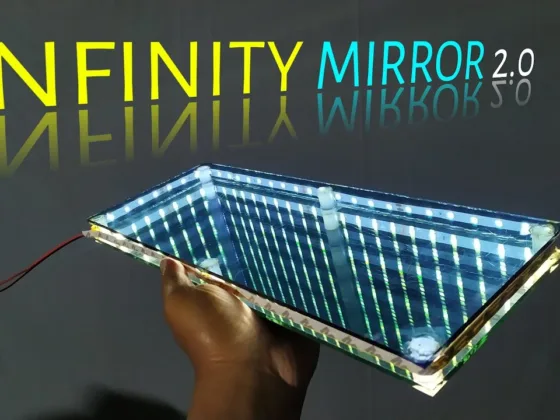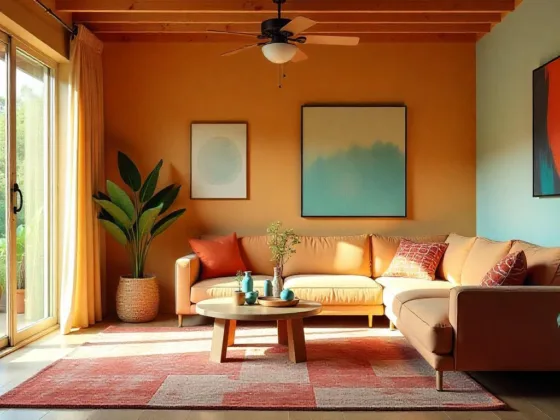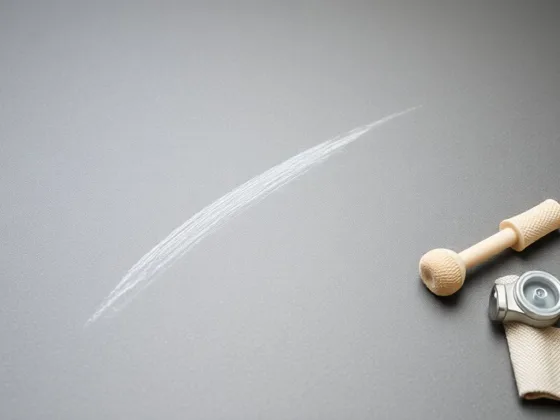Table of Contents Show
Introduction
The future of bedroom design is here, where sustainability, functionality, and smart home features come together to create a unique space. This guide explores DIY trends that focus on eco-friendly materials and innovative design solutions, including multi-functional furniture and smart technology.
You will learn to craft a personalized sanctuary that reflects your style while maintaining modern aesthetics. From sleek minimalist designs to striking accent walls, discover practical tips and projects that can transform your bedroom into a stylish and sustainable retreat.
Sustainable Materials
As we look toward the future of bedroom design, sustainable materials play a crucial role not only in aesthetic appeal but also in environmental conservation. Incorporating eco-friendly options in your DIY projects can significantly enhance the sustainability quotient of your living space.
1. Reclaimed Wood
Reclaimed wood, for example, provides a rustic charm while minimizing the demand for new timber resources. By utilizing reclaimed wood, homeowners can create beautiful furniture pieces, accent walls, or decorative shelving that tell a story while reducing their carbon footprint.
2. Eco-Friendly Paint
Choosing eco-friendly paint options is another effective way to make your bedroom design align with sustainable principles. Many paints now come with low or zero volatile organic compounds (VOCs), reducing harmful emissions into the air. Brands are increasingly offering water-based and bio-based paints that not only boast vibrant colors but also promote healthier indoor air quality.
A DIY project could involve repainting your bedroom walls with these eco-conscious products to achieve a fresh look while contributing to a healthier environment.
3. Natural Textiles and Fibers
Natural textiles and fibers present yet another avenue for sustainable bedroom design. Fabrics made from organic cotton, linen, hemp, and bamboo are not only biodegradable but also often produced without harmful chemicals, making them ideal for bedding, curtains, and upholstery. By opting for such natural materials, you can create a serene and comfortable atmosphere in your bedroom, perfect for relaxation.
Consider embarking on DIY projects like sewing your own curtains or creating throw pillows using these sustainable textiles — an approach that not only enhances your space but embodies modern DIY trends focused on conscientious living.
By thoughtfully selecting sustainable materials for your bedroom design, you contribute positively to the environment while crafting a space that reflects your values and personal style.
Multi-Functional Furniture
The concept of multi-functional furniture has emerged as a prominent trend in future bedroom design, greatly influencing the way individuals approach their living spaces. This design principle is rooted in the necessity to optimize limited square footage, especially in urban settings where space is at a premium.
DIY enthusiasts and homeowners alike are discovering the benefits of converting traditional furniture into versatile pieces that can serve multiple purposes, thus maximizing functionality in the bedroom.
Popular DIY Projects for Multi-Functional Furniture
Here are some popular DIY projects that exemplify the trend of multi-functional furniture:
- Storage Beds: One popular DIY project involves creating storage beds, which combine the comfort of a traditional bed with the practicality of under-bed storage. By using standard bed frames and incorporating drawers or lift mechanisms, individuals can easily construct a bed that offers ample storage for blankets, shoes, or seasonal clothing. This kind of project not only provides utility but also contributes to a cleaner, more organized space, reflecting the ongoing DIY trends in modern home design.
- Foldable Desks/Tables: Another noteworthy project is the assembly of foldable desks or tables, which can adapt to various activities. These desks can be constructed to fold away when not in use, allowing for more open floor space during the day while providing a functional workspace in the evenings. Incorporating hinges and lightweight materials can enhance the ease of use, ensuring these furniture pieces fit seamlessly into the flow of everyday life.
- Modular Shelving Units: Additionally, modular shelving units that can be reconfigured according to need are on the rise in bedroom design. These units facilitate creative organization and contain storage for books, decorative items, or personal belongings. By creating DIY modular systems, one can easily adapt to changing needs without investing in completely new furniture.
The trend of multi-functional furniture aligns perfectly with the essence of future bedroom design, encouraging a sustainable and practical approach to living spaces that respond to modern demands.
Smart Home Integration
Technology has evolved significantly in the design of future bedrooms, with smart home integration becoming increasingly common. This trend presents an excellent opportunity for DIY enthusiasts to transform their spaces by incorporating advanced technologies that enhance both convenience and comfort.
Through simple yet impactful DIY projects, individuals can create a bedroom that not only meets their aesthetic desires but also embraces modern functionality.
Smart Lighting Systems
One of the most compelling aspects of smart bedroom design is the installation of smart lighting systems. These systems allow homeowners to control the ambiance of their spaces through mobile applications or voice-activated devices. DIY projects can involve:
- Installing smart bulbs that offer customizable color and brightness settings, enabling personal preferences and mood adjustments with minimal effort.
- Utilizing smart switches for greater control over existing fixtures makes it easy to enhance any bedroom’s lighting without extensive renovations.
Temperature Control
Temperature control is another key feature of smart home integration, as maintaining a comfortable climate greatly influences overall well-being. DIY projects can include:
- Installing smart thermostats that learn individual preferences and optimize energy usage, promoting comfort while aligning with sustainable living practices.
- Integrating smart window coverings to enhance temperature management in the room, allowing for automated adjustments based on time of day or sunlight exposure.
Voice-Activated Devices
As smart technology continues to advance, voice-activated devices have become essential in many future bedroom designs. These devices can assist with various functions such as:
- Controlling lighting and temperature
- Playing music or reading news updates
DIY enthusiasts can easily incorporate such technologies into their bedrooms, often requiring only a few simple connections.
Overall, smart home integration enriches bedroom experiences while providing an avenue for personalized expression through innovative DIY trends.
Minimalist Aesthetics
As we look to the future of bedroom design, the minimalist aesthetic continues to gain traction as a favored choice for creating serene environments. Embracing simplicity, this design trend emphasizes a clutter-free space that promotes tranquility and functionality.
1. Achieving a Successful Minimalist Bedroom
To achieve a successful minimalist bedroom, the foremost step is to adopt a neutral color palette. Shades of white, gray, beige, and earthy tones foster an inviting atmosphere, allowing natural light to enhance the overall feel of the space.
2. Adding Personal Touches with DIY Wall Art
Moreover, incorporating DIY wall art can provide a personal touch while maintaining the minimalist ethos. Projects such as creating simple canvas paintings using monochromatic colors or assembling a gallery wall with unframed black-and-white photography can add character without overwhelming the senses.
It is crucial to maintain a balance; therefore, selecting a few key pieces that resonate with your style ensures the decor remains intentional and curated.
3. Fostering a Clutter-Free Environment
Fostering a clutter-free environment is another vital aspect of future bedroom design in line with minimalism. This involves evaluating essential items and eliminating unnecessary decor.
A well-organized space not only looks visually appealing but also promotes mindfulness and relaxation, allowing the bedroom to serve as a personal retreat. Incorporating smart storage solutions, such as under-bed drawers or floating shelves, can help keep personal belongings out of sight yet easily accessible.
By focusing on a neutral palette, creating thoughtful DIY art pieces, and ensuring a clutter-free environment, individuals can cultivate a tranquil bedroom space that reflects future design principles. This approach not only enhances the physical appeal but also encapsulates a lifestyle dedicated to serenity and balance.
Accent Walls
Accent walls are a great way to add personality and style to any bedroom. They allow homeowners to showcase their unique tastes while also enhancing the overall design of the room. With the help of creative DIY trends, it’s possible to turn a simple space into a customized retreat without overwhelming the existing decor. There are several techniques available that can help you achieve a beautiful accent wall in line with modern bedroom design.
1. Painting
One popular method for creating an accent wall is through painting. Using bold, contrasting colors or an unexpected hue can make a significant impact. For those who prefer subtler options, selecting a soft tone that complements other elements within the bedroom can also yield an elegant effect.
The painting process can be enhanced with the use of painter’s tape to achieve clean lines and intricate patterns, resulting in a professional-looking finish.
2. Wallpapering
Wallpapering is another effective technique that offers a wealth of design possibilities. With endless patterns and textures available, it enables homeowners to bring dimension and depth to a space. Peel-and-stick wallpaper options simplify the application process, making them perfect for those who might be apprehensive about permanent installations.
Additionally, stencils and decals offer a creative solution for adding unique designs without committing to an entire wall coverage.
3. Natural Elements
Incorporating natural elements such as wood panels or plants can also enhance the overall ambiance while adhering to sustainable DIY trends. Wood provides a rustic charm and warmth, while live plants can act as both décor and air purifiers, promoting a serene environment. Each of these approaches to accent walls allows for a high degree of personalization, enabling individuals to reflect their personalities and preferences.
Ultimately, the key to creating an accent wall lies in balancing creativity with simplicity, ensuring that the result enhances the bedroom’s atmosphere rather than overpowering it. With thoughtful consideration and execution, your accent wall can serve as a compelling representation of future bedroom design.
Personalized Decor
As trends in future bedroom design continue to evolve, personalizing one’s space has become an essential component of modern aesthetics. One effective way to achieve this is through DIY projects that allow individuals to express their unique styles and preferences.
1. Crafting Custom Photo Displays
Crafting custom photo displays is an excellent starting point. By using simple materials like frames, string lights, or corkboards, one can curate a visual narrative that resonates with personal experiences and cherished memories. This not only elevates the decor but also creates a warm and inviting atmosphere.
2. Transforming Textiles
Another area ripe for personalization is textiles. DIY textiles such as throw pillows or curtains can significantly transform a bedroom’s ambiance. By selecting fabrics and patterns that reflect personal taste, individuals can craft soft furnishings that do more than serve a purpose; they contribute to the overall character of the room.
Whether it is through sewing or simply using no-sew methods, creating pillows with favorite colors or patterns can add a touch of individuality to the space.
3. Upcycling for Unique Decor
Upcycling various items is also a remarkable way to introduce unique decor pieces into the bedroom. Old furniture, glass bottles, or even vintage finds can be repurposed into stylish decorations that tell a story.
For instance, turning an old ladder into a nightstand or using reclaimed wood to create a headboard not only highlights creativity but also aligns with eco-friendly diy trends. Engaging in such projects not only reduces waste but also offers a distinct personal touch that cannot be achieved through store-bought items.
Ultimately, the beauty of personalized decor lies in its ability to showcase individual identity while embracing the principles of future bedroom design.
Conclusion
The future of bedroom design is all about combining your style with practical solutions. When working on DIY projects, it’s important to remember the significance of using eco-friendly materials and integrating smart technology. The colors and textures you choose will greatly impact the atmosphere of your room.
By playing around with these aspects, you can design a bedroom that not only represents your personality but also keeps up with current trends. Don’t be afraid to let your imagination run wild and put these ideas into practice, turning your bedroom into a one-of-a-kind retreat that suits your requirements.
FAQ:
Sustainable materials, such as reclaimed wood and eco-friendly paints, enhance the aesthetic appeal of your bedroom while also contributing to environmental conservation. By choosing such materials, you reduce your carbon footprint and promote healthier indoor air quality, making your space not only stylish but also eco-conscious.
You can create multi-functional furniture by converting traditional pieces into versatile options. Popular DIY projects include building storage beds that offer under-bed storage, foldable desks that save space when not in use, and modular shelving units that adapt to your changing needs. These projects maximize functionality and are perfect for optimizing limited space.
Smart home features such as smart lighting systems, smart thermostats, and voice-activated devices can be easily integrated into your bedroom. DIY projects may involve installing smart bulbs for customizable ambiance, setting up smart thermostats for optimal temperature control, and using voice-activated devices to manage lighting and entertainment, enhancing comfort and convenience.
To achieve a minimalist aesthetic, focus on a neutral color palette and declutter your space by removing unnecessary items. Incorporate a few key DIY art pieces for personal touches while maintaining simplicity. Additionally, consider smart storage solutions, like under-bed drawers, to keep your belongings organized and out of sight, ensuring a serene environment.
You can create an accent wall through various techniques, including painting with bold colors or subtle tones, wallpapering with unique patterns, or incorporating natural elements like wood panels or live plants. Each approach allows for personalization while enhancing the overall design of your bedroom, making it a standout feature without overwhelming the space.










